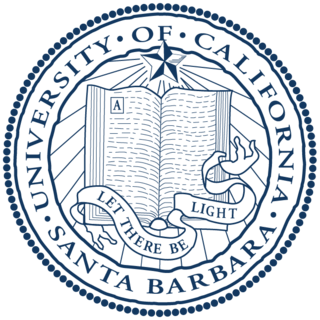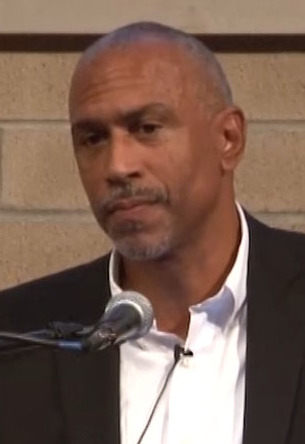
Chicano, Chicana, is an identity for Mexican Americans who have a non-Anglo self-image. Chicano was originally a classist and racist slur used toward low-income Mexicans that was reclaimed in the 1940s among youth who belonged to the Pachuco and Pachuca subculture. In the 1960s, Chicano was widely reclaimed in the building of a movement toward political empowerment, ethnic solidarity, and pride in being of indigenous descent. Chicano developed its own meaning separate from Mexican American identity. Youth in barrios rejected cultural assimilation into whiteness and embraced their own identity and worldview as a form of empowerment and resistance. The community forged an independent political and cultural movement, sometimes working alongside the Black power movement.
A gang is a group or society of associates, friends or members of a family with a defined leadership and internal organization that identifies with or claims control over territory in a community and engages, either individually or collectively, in illegal, and possibly violent, behavior.

The University of California, Santa Barbara is a public land-grant research university in Santa Barbara, California. It is part of the University of California 10-university system. Tracing its roots back to 1891 as an independent teachers' college, UCSB joined the University of California system in 1944 and is the third-oldest undergraduate campus in the system, after UC Berkeley and UCLA. In 2021, the university enrolled 23,196 undergraduate and 2,983 graduate students.

Juvenile delinquency, also known as juvenile offending, is the act of participating in unlawful behavior as a minor or individual younger than the statutory age of majority. In the United States of America, a juvenile delinquent is a person who commits a crime and is under a specific age. Most states specify a juvenile delinquent, or young offender, as an individual under 18 years of age while a few states have set the maximum age slightly different. In 2021, Michigan, New York, and Vermont raised the maximum age to under 19, and Vermont law was updated again in 2022 to include individuals under the age of 20. Only three states, Georgia, Texas, and Wisconsin still appropriate the age of a juvenile delinquent as someone under the age of 17. While the maximum age in some US states has increased, Japan has lowered the juvenile delinquent age from under 20 to under 18. This change occurred on April 1, 2022 when the Japanese Diet activated a law lowering the age of minor status in the country. Just as there are differences in the maximum age of a juvenile delinquent, the minimum age for a child to be considered capable of delinquency or the age of criminal responsibility varies considerably between the states. Some states that impose a minimum age have made recent amendments to raise the minimum age, but most states remain ambiguous on the minimum age for a child to be determined a juvenile delinquent. In 2021, North Carolina changed the minimum age from 6 years old to 10 years old while Connecticut moved from 7 to 10 and New York made an adjustment from 7 to 12. In some states the minimum age depends on the seriousness of the crime committed. Juvenile delinquents or juvenile offenders commit crimes ranging from status offenses such as, truancy, violating a curfew or underage drinking and smoking to more serious offenses categorized as property crimes, violent crimes, sexual offenses, and cybercrimes.
An at-risk student is a term used in the United States to describe a student who requires temporary or ongoing intervention in order to succeed academically. At risk students, sometimes referred to as at-risk youth or at-promise youth, are also adolescents who are less likely to transition successfully into adulthood and achieve economic self-sufficiency. Characteristics of at-risk students include emotional or behavioral problems, truancy, low academic performance, showing a lack of interest for academics, and expressing a disconnection from the school environment. A school's effort to at-risk students is essential. For example, a study showed that 80% to 87% of variables that led to a school's retention are predictable with linear modeling. In January 2020, Governor Newsom of California changed all references to "at-risk" to "at-promise" in the California Penal Codes.
Juvenile delinquency in the United States refers to crimes committed by children or young people, particularly those under the age of eighteen.
David Garland is Arthur T. Vanderbilt Professor of Law and professor of sociology at New York University, and an honorary professor in Criminology at Edinburgh Law School. He is well known for his historical and sociological studies of penal institutions, for his work on the welfare state, and for his contributions to criminology, social theory, and the study of social control.
Lloyd Edgar Ohlin was an American sociologist and criminologist who taught at Harvard Law School, Columbia University, and the University of Chicago over his career where he studied the causes and effects of crime and punishment, especially as it related to youthful offenders and delinquents.
Meda Chesney-Lind is a feminist, criminologist, and an advocate for girls and women who come in contact with the criminal justice system.
Jody Miller is a feminist criminology professor at the School of Criminal Justice at the Rutgers University (Newark). Her education includes: B.S. in journalism from Ohio University, 1989 ; M.A. in sociology from Ohio University, 1990; M.A. in women's studies at Ohio State University, 1991; and her Ph.D. in sociology from the University of Southern California in 1996. She specializes in feminist theory and qualitative research methods. Her research focuses on gender, crime and victimization, in the context of urban communities, the commercial sex industry, sex tourism, and youth gangs. Miller has also been elected as the vice president of the American Society of Criminology for 2015, the executive counselor of the American Society of Criminology for 2009–2011, as well as received the University of Missouri-St. Louis Chancellor's Award for Excellence in Service in 2007.

Crips and Bloods: Made in America is a 2008 documentary by Stacy Peralta that examines the rise of the Crips and Bloods, prominent gangs in America. The documentary focuses on the external factors that caused African-American youth to turn to gangs and questions the political and law enforcement response to the rise of gang culture.
In the United States, the war on gangs is a national movement to reduce gang-related activity, gang violence, and gang drug involvement on the local, state, and federal level. The war on gangs is a multi-lateral approach, as federal agencies seek to disrupt the cycle of violence through intervention with state police and social workers.
Martin Guevara Urbina (1972) is a Mexican-born American author, writer, researcher, professor, and speaker who, as a sociologist and criminologist, works on Latina and Latino issues in the United States.
Malcolm Klein is a criminologist, researcher, theorist, retired professor of Sociology at the University of Southern California, and the author of his book The American Street Gang. In addition, he continued to publish eighteen other books and more than fifty articles that are based on his research on gangs.
Dawn Valadez is a Mexican-American documentary filmmaker and fundraiser based in the San Francisco Bay Area in California. She directed and produced the documentary film, Going On 13 (2008) and is currently working on her next film, Teacher Like Me and co-directing The Pushouts.

Pedro Noguera is the Emery Stoops and Joyce King Stoops Dean of the University of Southern California's Rossier School of Education. He is recognized as a leading scholar of urban public education, equity, and school reform.

Mary Romero is an American sociologist. She is Professor of Justice Studies and Social Inquiry at Arizona State University, with affiliations in African and African American Studies, Women and Gender Studies, and Asian Pacific American Studies. Before her arrival at ASU in 1995, she taught at University of Oregon, San Francisco State University, and University of Wisconsin-Parkside. Professor Romero holds a bachelor's degree in sociology with a minor in Spanish from Regis College in Denver, Colorado. She holds a PhD in sociology from the University of Colorado. In 2019, she served as the 110th President of the American Sociological Association.

A cholo or chola is a member of a Chicano and Latino subculture or lifestyle associated with a particular set of dress, behavior, and worldview which originated in Los Angeles. A veterano or veterana is an older member of the same subculture. Other terms referring to male members of the subculture may include vato and vato loco. Cholo was first reclaimed by Chicano youth in the 1960s and emerged as a popular identification in the late 1970s. The subculture has historical roots in the Pachuco subculture, but today is largely equated with anti-social behavior, criminal behavior and gang activity.
Nikki Jeanette Jones is an American sociologist. She is an associate professor of African American Studies at the University of California, Berkeley.
The youth control complex is a theory developed by Chicano scholar Victor M. Rios to describe what he refers to as the overwhelming system of criminalization that is shaped by the systematic punishment that is applied by institutions of social control against boys of color in the United States. Rios articulates that there are many components of this complex which are enacted upon youth throughout their daily lives. For example, "while being called a 'thug' by a random adult may seem trivial to some people, when a young person is called a 'thug' by a random adult, told by a teacher that they will never amount to anything, and frisked by a police officer, all in the same day, this combination becomes greater than the sum of its parts." Scholars trace the origins of the youth control complex back to the mid-1970s. In addition, the criminalization and surveillance of Black and Latino bodies increased in the post-9/11 era.






